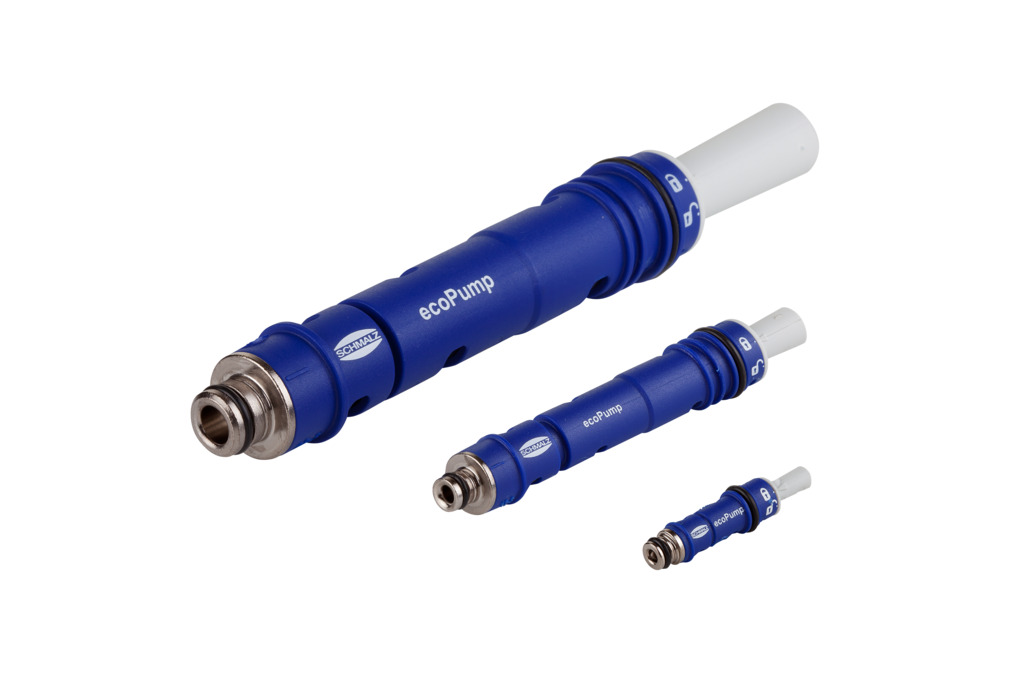
Moduły eżektorowe
- Małe i kompaktowe generatory podciśnienia
- Do scentralizowanego i zdecentralizowanego wytwarzania próżni
- Zintegrowany tłumik
Ejectors work on the Venturi principle; they are divided into singlestage ejectors and ejectors featuring eco-nozzle technology. The compressed air is supplied through connection (A) to ejectors. It flows through the venturi nozzle (B). The air is accelerated and compressed during this process. After passing through the nozzle, the accelerated air slows down once again and a vacuum is created. Air is drawn in this way through the vacuum connection (D). The aspirated air and the compressed air escape through the silencer (C).
With ejectors featuring eco-nozzle technology, the vacuum passes through several venturi nozzles arranged in a row. The volumes of the individual nozzles add up to form a total suction rate.
Advantages of ejectors
Typical areas of application
We distinguish between three types of ejectors:
Compact ejectors have an integrated air-saving regulation. This function interrupts vacuum generation as soon as a safe vacuum value has been reached. Vacuum generation is switched back on only once the value falls below the preset minimum vacuum value. Compact ejectors with an air-saving regulation use far less compressed air than a conventional vacuum ejector.